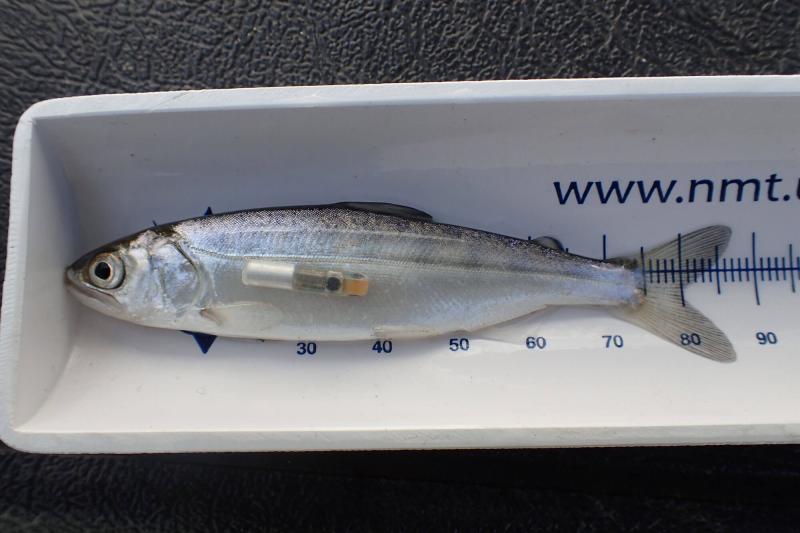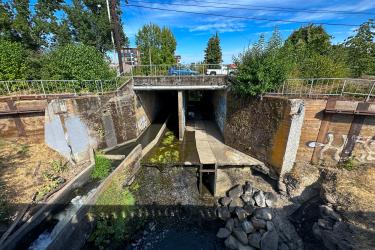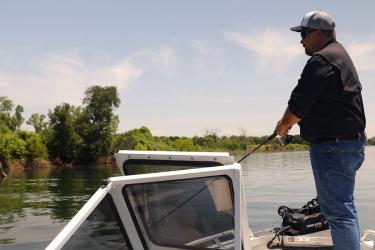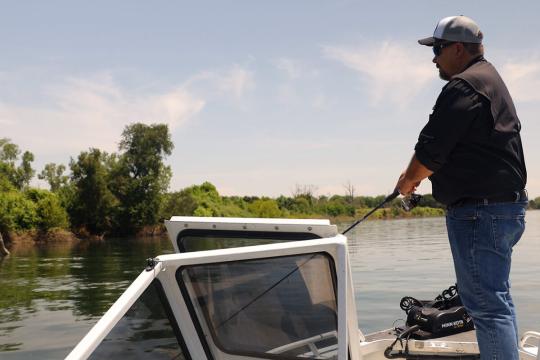Researchers from NOAA Fisheries and University of California Santa Cruz will tag several groups of juvenile salmon in the Sacramento River system. The tags will help us measure the benefits from the river’s first “pulse flow.” A pulse flow is a rapid increase and decrease in dam released water designed to resemble natural spring runoff.
The researchers want to know if the pulse flow increases the survival of juvenile salmon and improves their chances of returning to the river as an adult to spawn. They plan on measuring this by implanting tags into juvenile salmon migrating downriver before, during, and after the pulse. They will compare their speed and survival on the way to the ocean.
“We want to maximize our opportunity to learn from this,” said Cyril Michel, a research scientist with NOAA Fisheries Southwest Fisheries Science Center based at University of California Santa Cruz. “This doesn’t happen often so we are measuring it from every angle.”
Repeated atmospheric rivers delivering rain and snow to California over the last winter will provide enough runoff to provide two pulse flows on the Sacramento River this year. Provisions to protect threatened and endangered species in the Sacramento River call for a pulse flow as long as it does not substantially impact the amount of cold water available to support spawning of endangered winter-run Chinook salmon later in the year. They also must not interfere with meeting other water needs.
The first of the two pulses will begin on April 24. It will most directly benefit spring-run Chinook salmon protected as threatened under the Endangered Species Act. It will also benefit fall-run Chinook salmon, an important species for the West Coast’s ocean salmon fisheries. Each of the pulses will last 4 days. The second pulse is scheduled for early May.
Low returns of fall-run Chinook salmon led the Pacific Fishery Management Council to call for closing recreational and commercial salmon fishing off the California Coast and southern Oregon.
River Pulses Show Benefits
Pulse flows in other California rivers, such as the Tuolumne, have improved survival of juvenile salmon on their way to the ocean. They temporarily replicate the swift and deep spring flows that used to naturally occur in California rivers. This helps young salmon reach San Francisco Bay while avoiding predators along the way.
"We have long believed, and the science shows, that pulse flows could provide important benefits for salmon that are adapted to a surge of spring runoff," said Cathy Marcinkevage, Assistant Regional Administrator in NOAA Fisheries West Coast Region. "Last winter’s precipitation gives us a rare chance to see and measure those benefits in the Sacramento River. That will help us understand how to design future flows to provide the maximum advantage for fish.”
The U.S. Fish and Wildlife Service plans to take advantage of the pulse flow to release salmon from hatcheries on tributaries of the Sacramento River.
“We are pleased to coordinate the release of nearly 10 million juvenile Chinook salmon with the pulse flow being conducted by the Bureau of Reclamation on the Sacramento River,” said Brett Galyean, project leader at Coleman National Fish Hatchery. “Starting Monday, April 24, Coleman National Fish Hatchery will begin releasing approximately 70,000 endangered winter Chinook salmon and approximately nine million fall Chinook salmon into Battle Creek. The increased river flows should benefit the young salmon as they begin their downstream migration towards the Pacific Ocean.”
The juvenile migration is a crucial chapter in the salmon life cycle, determining how many fish safely reach the ocean. That in turn translates into adult salmon abundance about 2 or 3 years later. Salmon that migrated to the ocean in 2021, at the beginning of California’s recent severe drought, encountered poor conditions in the river and ocean. This led to the low forecasts of adult salmon returns this year.
Research on tagged fish in the Sacramento River has found a close relationship between river flows and juvenile salmon survival—higher flows leading to higher survival. Biologists suspect that the swift water carries salmon past predators. It may also benefit streamside habitat as water rises to create side channels where salmon can find refuge and grow on the way.
“There are many benefits that we expect come into play with high volumes of water,” Michel said. “We have done a lot of work to forecast what we think will happen in terms of survival and other benefits. Now we will be able to finally measure the real result.”
You can track the real-time movement and survival of the tagged juvenile salmon that are released before, during, and after the two pulse flows at CalFishTrack Central Valley Enhanced Acoustic Tagging Project.







